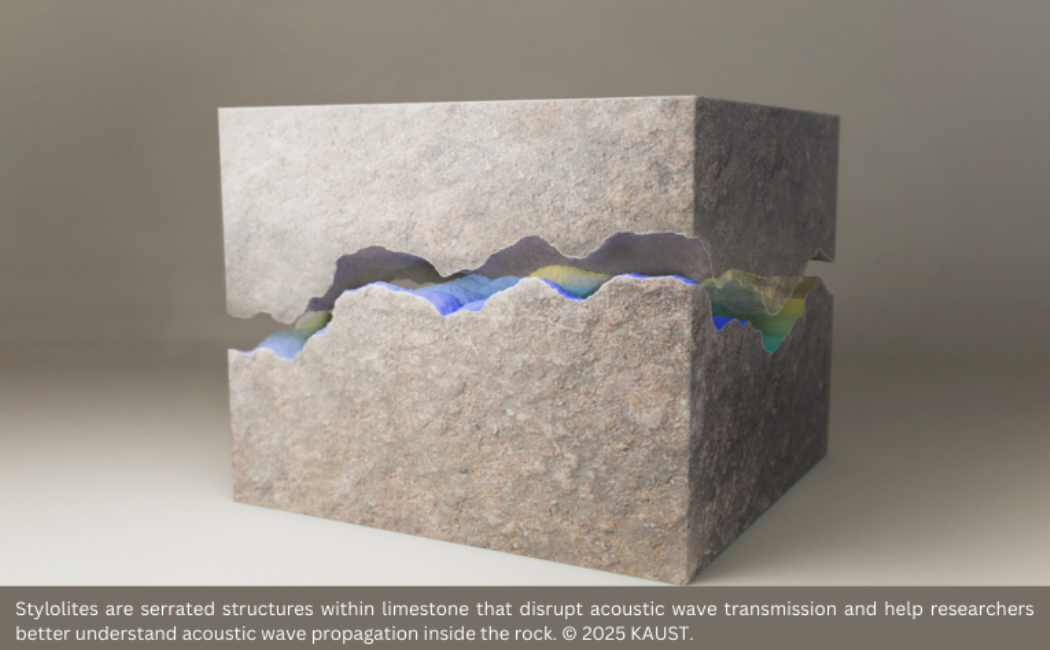


30 July, 2025
Weak discontinuities in limestone rock samples introduce noise into acoustic imaging with implications for monitoring lab-scale hydraulic fracturing.
Stylolites mark dissolution surfaces where minerals from the host rock have been dissolved by large overburden stresses. The resulting boundary consists of reprecipitated, insoluble material, such as clay. Due to their mechanical contrast with the host rock, these discontinuities may disrupt sound waves as they pass through.
The finding came from a stroke of luck for the researchers. “We were using limestone blocks for another experimental lab study when we noticed that stylolites were present in our samples,” says Finkbeiner. “This inspired us to investigate their physical properties in more detail and find out how they influence acoustic wave propagation at the lab scale. Few studies have explored stylolites from this angle before.”
The team imaged the stylolites using X-ray tomography equipment to gather data on their three-dimensional morphologies and characterize their dimensions.
“Imaging these stylolites was tricky because they were rather thin and had geometrically very irregular surfaces,” notes Finkbeiner. “Also, to better understand how their mechanical properties contrast with the ambient host rock, we had to open up our rock specimens with a saw, chisel, and hammer to access the stylolites and measure their hardness.”
Read more at KAUST Discovery.